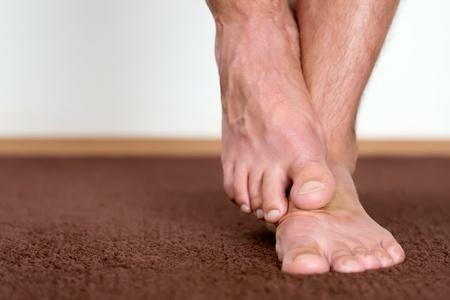Calluses: More Than Skin Deep
posted: Sep. 22, 2016.
Most of us recognize a callus—that hard, thick area of skin that forms usually on the heel or ball of the foot or on the outside of the big toe. Calluses can be present for a long time without causing pain or discomfort. This is partly what makes them not appear to be a major medical issue. However, a callus is more than what you see on the surface. At Southern Maryland Foot & Ankle we want our patients to be informed about the significance of calluses and why you shouldn’t ignore them.
What’s Going On Below the Surface?
In most patients’ minds a callus is a skin issue, but in reality a callus forms as a result of a bone problem. Unlike blisters, which are caused by excessive friction or pressure on the outside of the skin, calluses develop due to internal pressure. Most often this pressure is from a metatarsal bone that is too long or too low that becomes irritated because it is being subject to more pressure and shock than the other bones. Over time, a callus builds up to keep the soft tissue layers from being damaged. In some instances—when a bursa sac or nerve is between the protruding bone and the callus—a patient may experience sharp pains or soreness from the irritation this causes, making it difficult to walk or be on your feet for long periods of time.
Treating Calluses
The first step in properly dealing with a callus is finding out what’s causing it. Our board certified foot and ankle surgeons, Dr. Larry Hotchkiss and Dr. Justin Pointer, will examine your foot and also take your medical history to help find out why the callus has formed. Once the underlying problem has been diagnosed, treatment can begin. Depending on how large and painful the callus is, the doctor may recommend one or more of the following:
-
Switch to different shoes that do not put pressure on the affected area.
-
Use an orthotic device in the shoe to relieve pressure on the point where the callus has formed.
-
Callus removal: this can be done in the doctor’s office or at home by soaking your foot in warm soapy water and gently sloughing off the dead skin of the callus with an emery board or pumice stone. Over-the-counter products are also available but usually involve a strong acid to peel away the skin which can cause damage if misused.
-
Padding to cover and protect the callus until it is healed.
-
Wearing extra thick socks to cushion the callus.
Be sure to inform your foot doctor of anything unusual going on with your feet when you have a podiatric checkup. Sometimes minor issues still need to be addressed to prevent long term pain and disability. Schedule an appointment at our Clinton or Waldorf office if you have foot concerns that need to be addressed.

